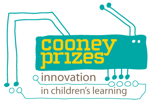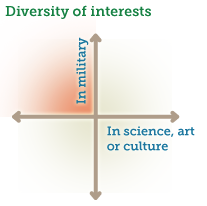There are gender wars, and then there are casualties. It wasn’t until 2011 that the behemoth toymaker LEGO acknowledged girls’ desire to build with bricks, even though the company had long before made a seemingly effortless pivot to co-branding, video games, and major motion pictures. So it’s little wonder that girls face all-too-real obstacles when […]
Read moreTag: Audience
 There is no better way to reach underserved audiences than to drive directly to them. Mobile museums, in converted RVs or semi-trailers, are delivering history, science and art experiences. Here are two great examples.
There is no better way to reach underserved audiences than to drive directly to them. Mobile museums, in converted RVs or semi-trailers, are delivering history, science and art experiences. Here are two great examples.
History
Reaching rural audiences for $10.71 per visitor, the “Van of Enchantment” brings cultural history to schools and public events in New Mexico — at no cost to visitors. New Mexico’s rich history traces back at least 11,000 years, and includes a flourishing Pueblo community in the 13th century, Spanish conquistadors and colonists in the 16th century, and railroads in the late 19th century. (more…)
 Is the art enough? Probably not. Art museum revenues are falling and museums need to experiment with new business models and ways to build a buzz and relevance with young audiences.
Is the art enough? Probably not. Art museum revenues are falling and museums need to experiment with new business models and ways to build a buzz and relevance with young audiences.
Yesterday, art critic Judith Dobrzynski wrote in her Real Clear Arts blog about how an upcoming nighttime event at the Hirshhorn is elitist, flaunted, and inexcusable. Dobrzynski says, “I’ve said it before, but I’ll say it again, if museum officials don’t believe that art is enough, no one else will either.” What do you think? (more…)
![]() Fast talks enliven conferences. Ignite and TEDx are two models of fast-paced, engaging and fun conferences which can be adapted for both public-oriented conferences and professional conferences. It’s a refreshing break from long lectures and panel discussions… (more…)
Fast talks enliven conferences. Ignite and TEDx are two models of fast-paced, engaging and fun conferences which can be adapted for both public-oriented conferences and professional conferences. It’s a refreshing break from long lectures and panel discussions… (more…)
 The National STEM Video Game Challenge, awarded the $50k grand prize last week to a professional team that did not meet the eligibility criteria.
The National STEM Video Game Challenge, awarded the $50k grand prize last week to a professional team that did not meet the eligibility criteria.
This story came to my attention last week, when I wrote a blog post about a cool online science game for Middle School kids which won the grand prize as part of the contest run by the Joan Ganz Cooney Center at Sesame Workshop (the parent organization of Sesame Street) and E-Line Media. That article briefly mentioned anomalies in the contest, and the Cooney Center sent me an email: “Please take this article down as soon as possible because of a legal issue that is pending.” This made me wonder, is there a scandal on Sesame Street?
 Social media can feel like you are talking to the world, but in reality there’s a lot of self-selection going on. So know your audience.
Social media can feel like you are talking to the world, but in reality there’s a lot of self-selection going on. So know your audience.
Before the Internet, the gatekeepers of public information (journalists, editors and producers) considered the needs of audiences for you. These gatekeepers would filter a fire-hose of information in press releases and technical publications to deliver a digested slivers of information via television news, tv, print, and trade press. Other kinds of technical information was discussed at conferences, at meetings, in journals or in private. (See my post about “Fall of the gatekeepers“) (more…)
 National security is a useful angle for presenting science, art and culture issues to disengaged or skeptical audiences.
National security is a useful angle for presenting science, art and culture issues to disengaged or skeptical audiences.
 Like any hook, such as sports or popular culture, military and national security themes broaden an audience for outreach. There are over 3.6M military personnel in the U.S., 1.9M spouses & kids of active duty members, and over 22M veterans, who also have families. (Stats on personnel & families, and veterans.)
Like any hook, such as sports or popular culture, military and national security themes broaden an audience for outreach. There are over 3.6M military personnel in the U.S., 1.9M spouses & kids of active duty members, and over 22M veterans, who also have families. (Stats on personnel & families, and veterans.)
There are several initiatives which are bridging the military world with the sciences and culture…
(more…)

The term “strategic communications” has become popular over the last two decades. It means infusing communications efforts with an agenda and a master plan. Typically, that master plan involves promoting the brand of an organization, urging people to do specific actions, or advocating particular legislation.
It can refer to both a process, and to a specific job title.
 Bad presentations abound, but it’s particularly egregious when presenting to public audiences. Text-heavy slides? Score! Confusing graphics? Score! Too many slides? Score! Have fun at your next presentation with Bad Presentation Bingo, a game developed by Monica Metzler, president of the Illinois Science Council. Check out the game… (more…)
Bad presentations abound, but it’s particularly egregious when presenting to public audiences. Text-heavy slides? Score! Confusing graphics? Score! Too many slides? Score! Have fun at your next presentation with Bad Presentation Bingo, a game developed by Monica Metzler, president of the Illinois Science Council. Check out the game… (more…)
Adapting your web content to different audiences increases the effectiveness of your project. Problem You must meet the needs of multiple audiences, each needing a different version of the same information. For example, you may need Spanish and English versions of each page, or versions geared towards different education levels. Solution Adapt your site content


 Drones, spy robots, Mach 6 warplanes, new energy sources, and climate monitoring are just a few of the new technologies being developed by the U.S. military to fight the wars of the future. These technologies depend on cutting edge scientific knowledge, and are fantastic ways to get the military-oriented public (nearly
Drones, spy robots, Mach 6 warplanes, new energy sources, and climate monitoring are just a few of the new technologies being developed by the U.S. military to fight the wars of the future. These technologies depend on cutting edge scientific knowledge, and are fantastic ways to get the military-oriented public (nearly